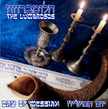… Rightly handling the word of truth.
Are you prepared to play archeologist? Many today want to find the Ark of the Covenant. Some claim to even have found it. But better than discovering the Holy Ark in a cave somewhere in the M. East, let’s unearth it from the debris of 2,000 years of man’s biased interpretations.
The writer of the letter to the Messianic Jews of Israel wrote, For if that first covenant had been faultless, there would have been no occasion to look for a second (Hebrews 8:7). If you read this verse in a King James Bible, you will find the word ‘covenant’ in italics. This is a tool KJV editors used to signal readers that a word was added as an aid to the translation. In most cases this tool is needed. You will notice also that in the Old Testament of KJV Bibles, most of the time ‘is’ is also italicized. The reason is that Hebrew infers the use of the verb ‘to be’ in the present tense, therefore it has to be added in an English translation. What we have in the aforementioned verse is different because the word ‘covenant’ is not inferred at all in the context of the chapter, but was added because of the doctrinal preference and understanding of the editors. This edition creates a totally different understanding of the eighth and the ninth chapter of the letter to the Messianic Jews, resulting in an anti-Torah and anti-Old Testament theology.
Reading it without the edition, the verse reads, For if that first had been faultless, there would have been no occasion to look for a second (Hebrews 8:7). Continuing the process in chapters eight and nine, we see that the text is not about so-called covenants, but is rather an explanation of God’s idea in the two chambers of the Tabernacle, the ‘first called the ‘proto’, and the second called the ‘Deutero’.
Chapter nine explains to us that these two chambers represent not a dispensation theology but a schedule. Let’s read it now without the edition, Now even the first had regulations for worship and an earthly place of holiness. For a tent was prepared, the first section, in which were the lampstand and the table and the bread of the Presence. It is called the Holy Place (this was a description of the first chamber; now to the second chamber). Behind the second curtain was a second section called the Most Holy Place, having the golden altar of incense and the ark of the covenant covered on all sides with gold, in which was a golden urn holding the manna, and Aaron's staff that budded, and the tablets of the covenant…. (Now the explanation from the text itself …) By this the Holy Spirit indicates that the way into the holy places is not yet opened as long as the first section is still standing (which is symbolic for the present age) (Hebrews 9:1-9).
This text was written between 65 and 70 C.E, being therefore told that the first chamber represents this present age, it is obvious that the second chamber represents a different age in the future, something we will present in the few next devotionals; in the mean time, keep digging!
 RSS Feed
RSS Feed


